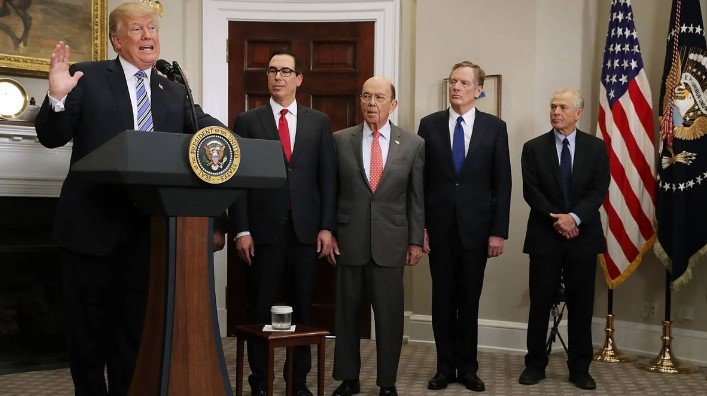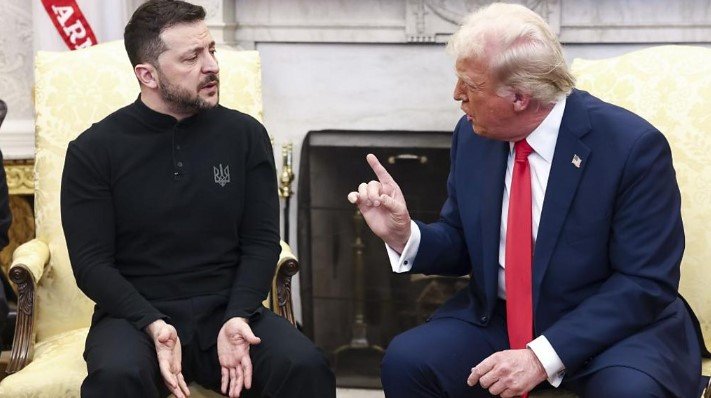Economic melting point is reached as Trump 2.0’s hardline approach to trade hot-shops volatility throughout industries and international markets.
Washington, D.C. – The US economy contracted in the 1st quarter of 2025, marking a bumpy beginning to Donald Trump’s 2nd term presidency. The contraction, which the Bureau of Economic Analysis (BEA) reported as a 1.4% decrease in GDP, is heavily blamed on the President’s new tariff policies, a week into President Trump’s presidency in January.
This change is the economically less robust surprise contraction period after mid-2022, which has already spooked Wall Street and increased the political clash around economically focused policy within Washington for the Trump administration’s advanced economic roadmap. Opponents assert these new taxes on Chinese products, European vehicles, and Southeast Asian electronics have altered supply chains and provoked countermeasures.
“We’re already feeling the impact of economic nationalism to the extreme,” noted Brookings Institution economist Julia Mendoza. “The figures capture a marked deceleration in business investment, elevated input costs, and increasing consumer uncertainty—all of which stem from the new tariff system.”
The Tariff Shock
In the second term of his presidency, Trump plans on implementing what he refers to as “America First 2.0.” This new strategy seeks to restore American manufacturing jobs, reduce imports from other countries, and improve the trade balance. Within the first thirty days of his presidency, the Trump administration imposed a 25% tariff on $300 billion worth of imports from China, a 15% tariff on all electric vehicles made in the European Union, and a 10% “national security surcharge” on selective electronics from Taiwan, Vietnam, and South Korea.
“These tariffs are not punitive but rather protective,” Trump stated during a press briefing in March of 2020. “We are reclaiming American industry and putting an end to decades of economic surrender.”
Businesses, however, are dealing with the high tariffs. Companies that rely on foreign parts are facing huge inventory traffic jams, and consumers are starting to notice the higher costs of electronics, vehicles, and other goods.

Market Response and Business Confidence
In April, the Dow Jones Industrial Average fell by 4.2%, and the S&P 500 fell by 3.8%. These drops could be tied to expansionist concerns and retaliation in the form of a trade war. Major companies such as those in automotive and tech are further cutting their quarterly projections.
As a retailer, Apple pointed out that assembling many of its products in Asia means additional tariffs would result in either price increases or profit margin squeezes. Automakers like BMW, Toyota, and Hyundai, which have large production bases within the US, expressed their fears dominion retaliatory duties for American goods produced in the US.
“The uncertainty is stalling investment,” said Steven Hanley, CEO of the American Trade Council. “Investors in the industry have yet to settle long-term blueprints when policies are radically overturned every week.”
Job Market Slowdown
The job market continues to be rather strong, with an unemployment rate of 3.9%. There are, however, some signs showing a slowdown. Manufacturing job growth is down by an additional 30% from last quarter. A recently released survey from NFIB suggests small businesses also face the same hurdles, which has resulted in lower confidence amongst them, a rise in material costs, alongside potential deceleration of economic activity.
Retailers are particularly at risk. Major retailers like Best Buy and Walmart have already said that they will impose higher prices on electronics and appliances, which may dampen consumer spending, the longtime champion of the U.S. economy.
Increasing Consumer Costs
Inflation, which started to level off in the second half of 2024, surged again in the first quarter of 2025. The CPI increased by 0.6% in March alone, with the greatest contribution from imported domestic consumption. There are fears that chronic inflation coupled with a shrinking economy—the uncommon condition known as stagflation—may mark the early months of Trump’s new term.
“This is a worst-case scenario forming—low growth, high inflation, and rising trade tensions,” said Annabelle Triggs, Chief U.S. Economist at Global Outlook Partners. “It’s too soon to panic, but not too early to prepare.”
International Consequences
Trump’s new tariffs are not humorously taken by the international community. China promptly retaliated with counter tariffs on imported American soybeans, beef, and aircraft components. The European Union placed a 20% customs tax on Harley-Davidson motorcycles and bourbon, emblematic American goods, seen to intentionally target important Republican states.
Canadian Prime Minister Julia Dufresne remarked that the new policies from the U.S. are “regressive and damaging to North American economic cooperation.” Meanwhile, the Japanese and South Korean leaders have both requested urgent diplomatic consultations to prevent further escalations.
Intensive analysts’ forecasts on a renewed global trade war have already emerged after three formal complaints were issued regarding new tariff measures to the WTO.
White House Position
“Temporary dip” was the phrase Treasury Secretary John McAllister used to describe the astonishing below-average GDP report. The contraction of the economy doesn’t seem to tilt the balance for the Trump Administration, as McAllister stated, business activities rebounding post-pandemic is to be expected.
Trump’s determination to remain positive before moving into the election period focuses on changing the narrative.
The initiatives proposed are reported to promise growth in job availability while focusing on domestic manufacturing as well as electric vehicle grooming. It’s for the American values associated with freedom and prosperity.
Policy Outcomes
As Trump gets challenged by opposing parties, it creates greater political friction. Democrats are determined to take a root opportunity which could erase the image of a dominator unequipped for politics, revealing the president’s short-sightedness to the voters.
“While promising prosperity, burdening pain afflicts the nation instead,” highlights Trump’s financial policies during his presidency, quoted by Senate Majority Leader Alexandria Ocasio-Cortez. “We offered notable warnings, and as expected, the American public never voted for exorbitant inflation rates, the loss of crucial trade partners, and economic decline.”
As it appears, Trump’s base remains loyal. In swing states such as Michigan and Ohio, many attendees have not altered their support for the nationalist policies. Many blue-collar workers support nationalism due to the inherent expectation for long-term job growth.
“Enduring some monetary burden,” explains Carl Webb, a factory worker in Youngstown, Ohio. “It does pave the way for retaining employment opportunities within the US.”
Table of Contents
What’s Next?
With the unfolding of Q2, time will tell whether the contraction phase is a mere distortion or an initiation of a retraction cycle. Economists and policymakers are eager to track the protective trade policies. Much will rely on the global response, consumer spending power, and the administration’s economic stabilizing endeavors alongside its protectionist ideals.
For the moment, the notion serves accurately: Trump’s impact during the first wave of inflation and the follow-up recession are yet to be witnessed alongside the initial turbulent trajectory.



